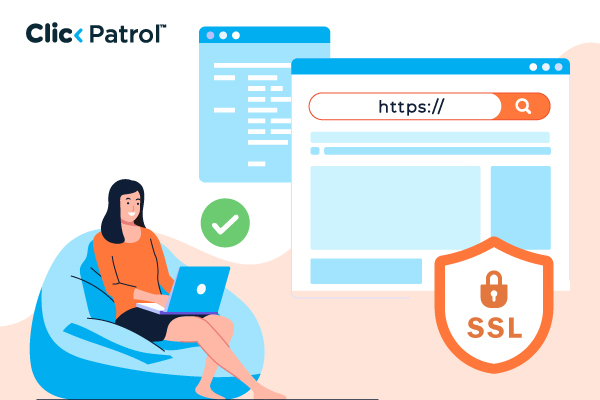A shocking ad is an ad campaign that attempts to provoke strong emotional reactions, such as shock, indignation, or discomfort, often to create attention and stimulate conversation.
Shocking advertisements: When bold marketing works and when it backfires
Abisola Tanzako | Jun 06, 2025

Table of Contents
- What are shocking advertisements?
- Benefits of shockvertising
- 5 Shocking ads that went viral: what marketers can learn
- 1. Benetton—"Unhate" Campaign
- 2. Diesel—"Be" Stupid"
- 3. CDC—"Tips from Former Smokers"
- 4. PETA—Animal Rights Campaigns
- 5. CALM—"Project 84"
- Why brands use shock advertising
- Real-world example:
- Shock done right vs. shock gone wrong
- How to use shock advertising (responsibly)
- The future of shockvertising
- Should you use shock value in your advertising strategy?
In a world where consumers are bombarded with a thousand advertisements daily, most do not even register.
According to a 2023 Nielsen report, shock-based ads are 27% more likely to be remembered than traditional ads.
We scroll past them, skip over them, and promptly forget them.
And then there are the occasional ones that come up short, not because they are lovely or funny, but because they shock.
These are shocking advertisements, bold, provocative, and often controversial campaigns that refuse to blend in.
This guide explores what makes an ad shocking, notable real-world examples, and the fine line between memorable and offensive branding.
What are shocking advertisements?
Shockvertising, or shocking advertisements, are campaigns deliberately designed to shock, upset, or provoke emotional stimulation among their audience.
These advertisement campaigns tend to address taboo topics, use disturbing visuals, or employ startling communication, thereby evoking emotional tension; a strategy that fosters memorability.
Whereas traditional advertisements depend on appealing to comfort or reason, shock advertisements shatter expectations and prompt the viewer to take action, inducing outrage in some cases and inspiring awe in others.
Psychologically, we are wired to notice what’s unusual or out of place, a phenomenon known as the “Von Restorff effect” or the “isolation effect.”
Benefits of shockvertising
The benefits of shockvertising include:
- Higher brand recall: Shockvertising leaves a lasting impression on the viewer. As it is likely to be surprising or emotionally provocative, people will be more inclined to remember the ad and brand name.
- Emotional engagement: Through inducing strong emotional reactions, such as anger, empathy, unease, or wonder, shocking ads reach beyond surface attraction.
- More shareability: Surprise or provocative material that gets people discussing. When an ad surprises or evokes emotions in viewers, they are more likely to share it with their friends, post it on social media, or even debate it online.
- Conversation starters: Provocative advertising often addresses taboo or controversial topics, sparking dialogue on matters typically not discussed in traditional advertisements.
5 Shocking ads that went viral: what marketers can learn
Let’s look at some bold campaigns that made headlines around the world.
1. Benetton—”Unhate” Campaign
Benetton, notorious for its shock images, launched “Unhate,” employing manipulated images of world leaders kissing, such as Barack Obama and Hu Jintao or the Pope and an Egyptian imam.
The campaign aimed at disseminating tolerance but generated worldwide controversy.
- Why it worked: It articulated Benetton’s anti-hate agenda and gained worldwide media coverage.
2. Diesel—”Be” Stupid”
Diesel’s counter-cultural campaign told audiences to forget rationality and “be stupid.”
With wild, unbridled imagery and one-liners, Diesel became a brand name for the adventurous and spontaneous.
- Why it succeeded: It catered to youth counterculture and stood out in the world of fashion.
3. CDC—”Tips from Former Smokers”
The U.S. Centers for Disease Control ran a haunting anti-smoking campaign using real individuals whose tobacco-related injuries included voice boxes, amputations, and disfigurement.
It was not pleasant, and that was the point.
- Why it worked: It was real, raw, and emotionally crushing.
4. PETA—Animal Rights Campaigns
PETA is infamous for its controversial advertisements, from comparing animal slaughter to human genocide to showing graphic images of animal cruelty.
It likes to outrage but keeps animal rights in the limelight.
- Why it worked: The shock aligns with their intention to evoke empathy and action.
5. CALM—”Project 84″
UK suicide prevention group CALM placed 84 life-sized statues on the balcony of a London skyscraper, commemorating the 84 men who kill themselves each week in the UK.
It was disturbing and could not be overlooked.
- Why it worked: It took numbers and made them a tangible, emotional declaration.
Why brands use shock advertising
Shocking ads are an eye-opener. When deployed with intention, they can change culture.
- Cut through the noise: Grabs attention in an ad-saturated culture.
- Spark viral sharing: Encourages buzz and media attention, increasing reach.
- Build a bold brand identity: Positions the brand as fearless, edgy, or forward-thinking.
- Drive urgency: Especially compelling in social causes or public service announcements (PSAs).
- Force reflection: Encourages intense thinking, empathy, or a shift in perspective.
Real-world example:
Kendall Jenner’s Pepsi ad attempted to link the brand to social justice protests but ultimately appeared to trivialize serious issues.
The backlash was extreme, and Pepsi pulled the ad within 24 hours.
Shock done right vs. shock gone wrong
Here’s how to distinguish between shock that sparks impact and shock that sparks backlash.
Shock done right
- Clear message: The purpose is easily understood.
- Values-driven: The message aligns with the brand’s values or a meaningful cause.
- Targeted: Speaks directly to the intended audience.
- Ethical use of emotion: Evokes feelings without crossing moral lines.
- Memorable for meaning: Leaves a lasting impression tied to a valuable takeaway.
Shock gone wrong
- Confusing intent: Viewers are uncertain about the message’s meaning.
- Sensationalism without substance: Shocking just for attention, with no depth.
- Alienates or offends the audience by pushing boundaries too far or ignoring cultural sensitivity.
- Exploitative or insensitive visuals: Uses disturbing content carelessly.
- Memorable for the wrong reasons: The ad is remembered, but for all the wrong reasons.
How to use shock advertising (responsibly)
Conducting a shock-based marketing effort requires following a specific approach, which will be outlined.
- Start with purpose: The effect of shock should enhance your communication rather than take its place. Ask yourself what your message conveys and its purpose in the broader context.
- Know your audience: Something that triggers shock in one community group can serve as a source of power for another.
- Understand your target group deeply.
- Balance boldness with ethics: You should prevent the use of trauma exploitation, stereotypes, and insensitivity. Narrate using emotional components while remaining truthful to your message.
- Test before launch: A/B testing and focus groups will help determine how much risk your message presents compared to its emotional impact. Don’t fly blind.
- Be ready for reaction: When your advertisement generates engagement, joining the conversation should be among your prepared response measures. Your organization should maintain an operational team ready for social media and PR assistance.
The future of shockvertising
As attention becomes increasingly short-lived and combative, shock advertising will continue to adapt.
But viewers also catch on; they have an instinct for sensing dishonesty from a distance.
The future of shockvertising will be
- Meaningful, and not just provocative
- Storytelling-oriented
- Engagement-driven, not just spectacle-driven
- Ethically based
Should you use shock value in your advertising strategy?
While shock advertising can increase brand awareness, stir strong emotions, and generate public attention, it can also yield negative results if not carefully managed.
Shock value can be highly effective when your audience is receptive to bold content and your message is tied to a meaningful purpose or social issue.
It works best when the shocking element is relevant and supports the main message.
On the other hand, shock advertising is likely to fail when it feels forced, disrespectful, or insensitive, especially when dealing with serious matters such as trauma or social justice.
If your audience is unlikely to react positively or your message lacks a clear purpose, the campaign may fail to engage or harm your brand’s image.
Frequently Asked Questions
-
What is a shocking ad?
-
Are shocking ads effective?
Yes, strategically. Shock ads can effectively increase recall and engagement, but fail if the message is unclear or tactless.
-
Which brands are famous for shockvertising?
Benetton, Diesel, PETA, and charitable organizations like CALM and the CDC have all utilized shockvertising to make their mark and create awareness.
-
What are the risks of shock advertising?
Some risks include offending the viewer, harming the brand, incurring legal consequences, or distracting from the intended message.






